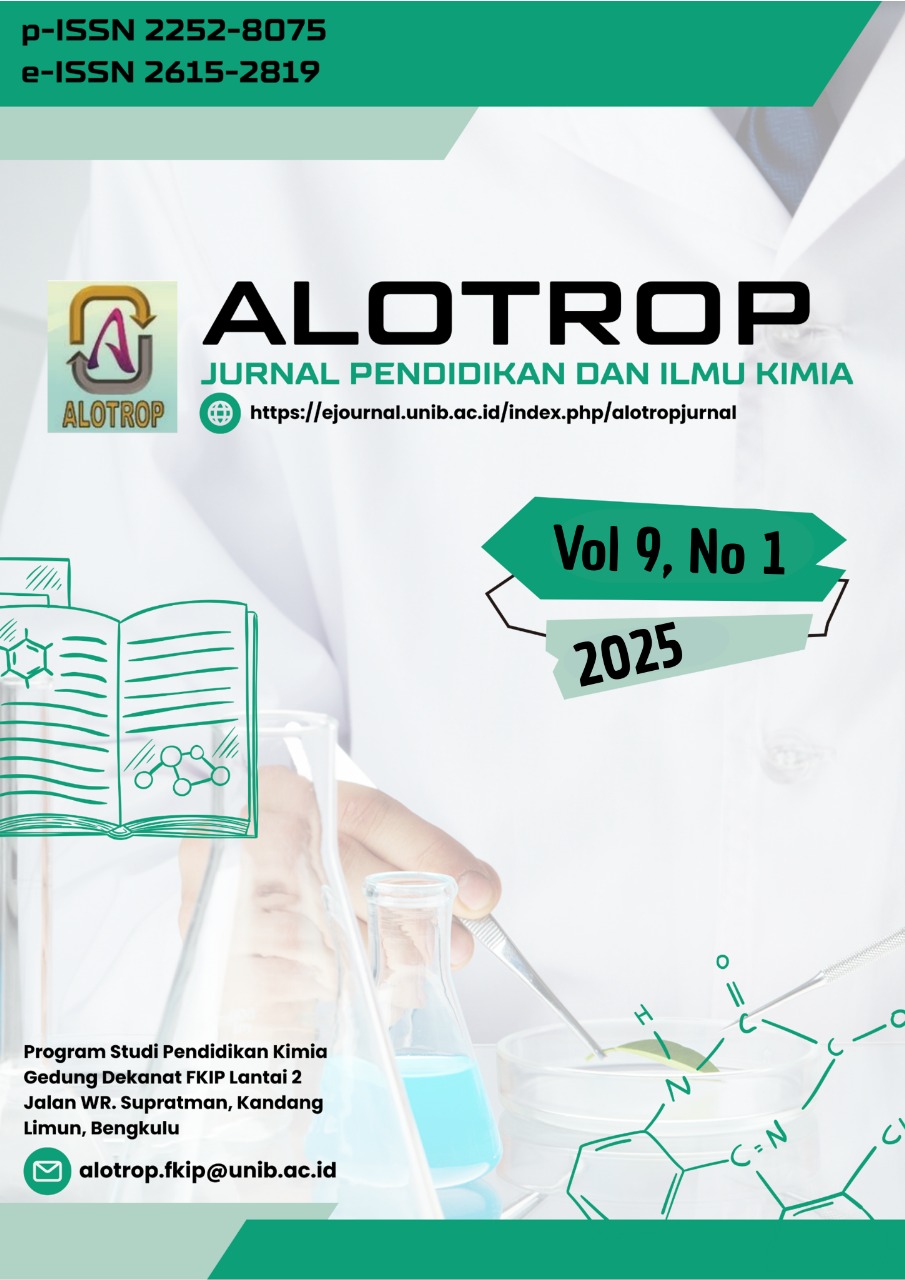Main Article Content
Abstract
Chemical glass bottle waste can be used to make silica gel due to its high content of SiO2 composition. The aim of this research is to obtain silica which is extracted from chemical waste from glass chemical bottles and synthesized using the sol gel method. Chemical glass bottle waste can be extracted by alkali fusion. The mass ratio of glass powder: NaOH is 1:3. The calcination process is carried out at 800°C within 4 hours to obtain sodium silicate. Sodium silicate was then synthesized using the sol gel method by reacting with HCl to form a white gel. The gel was then left for 18 hours, then filtered. The resulting precipitate was washed until it reached pH 7. The drying process was in an oven at 80°C for 12 hours. The final product is white silica gel which was characterized using FTIR and XRD. FTIR was used to obtain typical absorption bands, such as the siloxane ring 447.5 cm-1, as well as the symmetric and asymmetric Si-O-Si stretching vibrations, namely 702.11 cm-1 and 1022.31 cm-1 , respectively. The XRD results produced a characteristic peak at 2 theta around 22-25°, which means that the silica gel structure obtained in this study has amorphous properties.
Keywords: Synthesis; silica gel; chemical glass bottle waste
Article Details

This work is licensed under a Creative Commons Attribution-ShareAlike 4.0 International License.
Authors who publish with this journal agree with the following terms:
- Authors retain copyright and grant the journal right of first publication with the work simultaneously licensed under a Creative Commons Attribution License that allows others to share the work with an acknowledgment of the work's authorship and initial publication in this journal.
- Authors are able to enter into separate, additional contractual arrangements for the non-exclusive distribution of the journal's published version of the work (e.g., post it to an institutional repository or publish it in a book), with an acknowledgment of its initial publication in this journal.
- Authors are permitted and encouraged to post their work online (e.g., in institutional repositories or on their website) prior to and during the submission process, as it can lead to productive exchanges, as well as earlier and greater citation of published work (See The Effect of Open Access).
- This work is licensed under a Creative Commons Attribution-ShareAlike 4.0 International License.
